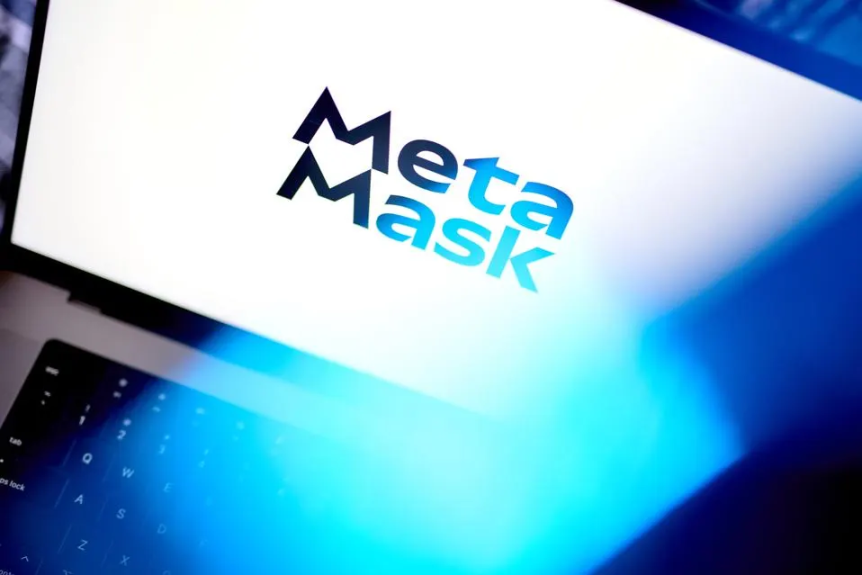Written by: Jeff Gapusan, Forbes
Translated by: Saoirse, Foresight News
In August 2020, a business intelligence (BI) software company, also a highly regarded internet enterprise, adjusted its business model to make Bitcoin acquisitions a core treasury reserve asset. This move not only significantly enhanced the company's visibility but also propelled the development of the term "DATCO" (Digital Asset Treasury Company). Subsequently, Strategy Company (formerly MicroStrategy) rose to prominence in the financial and cryptocurrency sectors, becoming a household name.

Co-founder and Executive Chairman of Strategy Company, Michael Saylor, led the company's strategic entry into the Bitcoin space in August 2020. Photographer: Ronda Churchill / Bloomberg
Traditional capital management concepts hold that the function of a corporate treasury is limited to managing cash, bonds, and other fiat currency assets, while the rise of digital asset treasury companies challenges this perception. As the popularity of digital assets increases, corporate treasuries are beginning to consider whether to include digital assets in their portfolios, or even as the core of their portfolios. This shift has given rise to a new type of publicly listed company — Digital Asset Treasury Companies (DATCO), attracting widespread attention in the fintech community. In an article earlier this month, Chris Perkins, president of Coinfund, referred to the summer of 2025 as "a summer to remember for DAT."
However, as market enthusiasm rises, a key question emerges: Is investor interest in these companies based on a robust long-term strategy, or merely speculative bets on asset appreciation?
Strategy Company's Transformation to DATCO
Founded by Michael Saylor in 1989, MicroStrategy was an early player in the business intelligence field, primarily providing data analytics software to assist corporate decision-making. The company went public in 1998, and by early 2000, Saylor had become one of the wealthiest individuals in Washington, D.C.

MicroStrategy was a star company during the dot-com bubble. After early controversies, it did not regain its former glory but maintained a successful software business. (Image source: CFOTO / Future Publishing, licensed by Getty Images)
In March 2000, the company's fate took a turn: due to accounting errors, it was forced to restate its financial results for the previous two years. Following the announcement, its stock price plummeted 62% in a single day, and the U.S. Securities and Exchange Commission (SEC) launched an investigation, causing Saylor's personal net worth to shrink by billions.
After the dot-com bubble burst, MicroStrategy became a "respected but unremarkable" enterprise software company over the next 20 years: while it continued to profit from software sales, it faced fierce competition from industry giants like Microsoft and Oracle. Although Saylor remained at the helm, the company's influence had significantly diminished compared to its high-profile moments during the bubble.
In August 2020, Saylor led Strategy Company in its transformation to DATCO: investing $250 million to acquire over 21,000 Bitcoins. As of September 15, 2025, the company held nearly 640,000 Bitcoins, valued at $47.2 billion. During the same period, Strategy's market capitalization grew by over 2700% (an annual growth rate of 92.0%), attracting widespread attention and anticipation from professionals in finance and fintech.
Seeking Permanent Capital
For readers unfamiliar with DATCO, it can be likened to "permanent capital vehicles (PCV)" in the energy infrastructure and real estate investment sectors — such as master limited partnerships (MLP) or real estate investment trusts (REIT). Similar to these vehicles, DATCO offers investors a unique and advantageous way to invest in long-term illiquid assets.

Master limited partnerships (MLP) have long been the core financing structure for energy and infrastructure project investments. (Image source: Getty Images)
There are many reasons why operating companies favor permanent capital. For industries that require long-term nurturing to create value, permanent capital is seen as "patient capital": unlike traditional private equity or venture capital funds (which typically have a fixed lifespan of 7-10 years), permanent capital vehicles (PCV) are designed to "exist in perpetuity" (i.e., "evergreen" structures), allowing issuers and companies to align their operational pace with the long-term growth of underlying investments.
Structural Advantages of Permanent Capital Vehicles
The emergence of permanent capital vehicles stems from the market's demand for "investment structures that better align with the essence of long-term value creation" (especially in private markets). They provide investors with a more stable, patient, and flexible way to access high-potential assets.
These vehicles allow investors to engage in private equity, private credit, real estate, and other "niche or illiquid private market assets" — assets that were previously mostly accessible only to institutional investors. Although more investors can now more easily enter the digital asset market, ordinary investors still find it challenging to choose among numerous products and complex participation methods.
In terms of investor subscriptions and redemptions, permanent capital vehicles also offer greater flexibility (e.g., opening liquidity windows quarterly or annually) — this is a core advantage over traditional private funds: traditional private funds typically require investors to lock in their capital for the entire duration.
For fund managers and corporate executives, a stable and continuous source of funding allows them to break free from the cycle of "frequent financing," enabling them to focus on business management, investment operations, and revenue generation, thereby enhancing the company's ability to withstand short-term market fluctuations. Management can make decisions based on long-term strategic considerations rather than being passively reactive to immediate market pressures.
The Uniqueness of DATCO
The core definition of a Digital Asset Treasury Company (DATCO) is: a publicly listed company that "strategically holds a large amount of digital assets on its balance sheet" as a core business function. Unlike traditional companies that "only hold a small amount of cryptocurrency as ancillary investments or operational tools," DATCO's business model revolves entirely around the accumulation and management of digital assets. The pioneer in this field, MicroStrategy, converted its cash reserves into Bitcoin in August 2020, setting a benchmark for subsequent companies.
The uniqueness of DATCO lies in its "dual attributes": it is both a publicly traded company and a capital market tool that allows investors to directly access specific digital assets. For investors, this provides an attractive alternative — without needing to hold digital assets directly or through ETFs, they can indirectly position themselves through DATCO. Investing in DATCO is seen as a "high beta, leveraged alternative investment" to the underlying assets, allowing investors to gain amplified asset exposure through a familiar equity structure.
This model is built on a "reflexive loop," enabling rapid growth when market conditions are favorable: when digital asset prices (like Bitcoin) rise, DATCO's equity value often trades at a significant premium to its net asset value (NAV). This premium allows the company to issue new shares at prices above NAV through an "at-the-market (ATM) program," using the raised funds to acquire more digital assets, ultimately enhancing the per-share asset value for existing investors.
This positive feedback loop is a powerful growth engine but is also quite fragile — it is highly dependent on sustained market sentiment and rising asset prices.
Historical Perspective: DATCO and Other Permanent Capital Vehicles
Although DATCO appears to be a new phenomenon, it bears a striking resemblance to past "investment tools that provide leveraged exposure to specific asset classes." Permanent capital vehicles like real estate investment trusts (REIT) and master limited partnerships (MLP) follow similar operational principles: leveraging favorable market conditions and low-cost capital to generate returns.
The core business of real estate investment trusts (REIT) is to hold, operate, or finance income-generating real estate. When REITs trade at a premium to net asset value (NAV), they typically issue new shares to raise funds, which are then used to acquire more properties, creating a positive cycle. However, this model is highly susceptible to interest rate changes, economic downturns, and real estate market sentiment — once the premium disappears, the REIT's ability to finance at low costs will vanish, and it may face dual pressures of debt repayment and asset portfolio expansion.
Master limited partnerships (MLP) in the energy sector also share historical similarities with DATCO. MLPs typically own and operate energy infrastructure (such as oil and gas pipelines), and their value is directly linked to the health of the energy industry and commodity prices. Historically, MLPs have also relied on capital market financing, with performance highly leveraged to the underlying assets. Similar to DATCO, MLPs provide investors with a way to "access specific asset classes through publicly traded, tax-advantaged vehicles."
The core risks faced by these tools — financing fragility, reliance on speculative premiums, and sensitivity to market volatility — are entirely consistent with those of DATCO. This means that the challenges faced by DATCO are not unique to the digital asset space but are inherent risks of all "business models that serve as leveraged permanent capital vehicles for specific asset classes."
Companies that can survive in this space do not rely solely on the "reflexive loop" for profit but are those that can build more robust and value-creating businesses to navigate the inevitable "tide retreats" of the cycle.
Outlook: Opportunities and Risks
The short-term growth trajectory of Digital Asset Treasury Companies is the focal point of current market debates. Optimists believe that multiple factors will drive their continued expansion.

South Carolina Republican Senator Tim Scott and Wyoming Republican Senator Cynthia Lummis have been dedicated to promoting transparency in digital asset regulation. Photographer: Liam Kennedy / Bloomberg
First, regulatory transparency is gradually improving. As governments around the world, including the United States, establish more structured regulatory frameworks for digital assets, institutional investor confidence continues to grow. Meanwhile, regulatory agencies' attitudes have shifted from "cautious observation" to "actively exploring the integration of digital assets with the existing financial system," creating a more predictable environment for corporate operations and investor participation.

Illustration of "altcoins" such as Ethereum, Ripple, and Litecoin. For DATCOs seeking diversified investments beyond Bitcoin, these assets may present development opportunities. (Image source: Jack Taylor / Getty Images)
Secondly, the trend of institutional investors transitioning to digital assets is irreversible. According to the 2025 Institutional Investor Survey published by EY, the vast majority of institutional investors plan to increase their allocation to digital assets, with the core goal of achieving portfolio diversification. In addition to Bitcoin, market interest has also extended to Ethereum, tokenized real-world assets (such as tokenized government bonds), and stablecoins. In the coming years, the tokenization of traditional assets is expected to become a trillion-dollar industry, opening up vast new fields for DATCOs. The prevalence of stablecoins also reflects this trend — for example, with the successful IPO of Circle in June 2025, the current market capitalization of stablecoins has exceeded $307 billion, three times the size of the DATCO market.
Finally, the unique advantages of digital assets — such as faster settlement speeds, lower financing costs, and greater transparency — make them an ideal choice for corporate financial executives: they can optimize cash management through digital assets, unlocking value that traditional tools cannot achieve. At the same time, fintech companies are rapidly developing related solutions to help DATCOs enhance operational efficiency.
Risks Behind the Returns
However, like other permanent capital vehicles, the DATCO model also carries significant risks. The core risk lies in the fundamental logic of the model — the "reflexive loop" driven by trading premiums. This model operates smoothly during sustained market uptrends, but once market sentiment reverses, the loop can quickly unravel. The disappearance of premiums may trigger a negative feedback loop: if a company wants to raise funds, it must either endure significant equity dilution or bear high debt costs.

Similar to real estate investment trusts (REIT), external market factors such as interest rates and capital costs can also affect the valuation of assets held by DATCO. (Image source: Charles Krupa / AP, file photo)
This raises another core issue: financing costs. Many DATCOs lack substantial operating income and are highly reliant on capital market financing. While "issuing shares at a premium" is a powerful financing tool, it is not the only option — some companies also utilize convertible notes and other debt instruments. This reliance on such capital (especially debt) may lead to a fragile corporate structure: once the market declines, the ability to repay debt and refinance will become a significant risk. For companies whose "market capitalization is highly leveraged to the price of underlying assets," their financial stability is more likely to be questioned.
Moreover, an excessive focus on asset appreciation may lead investors and management to overlook the "hidden costs" of holding digital assets. In addition to initial capital, ongoing investments are required for custody, security, compliance, and risk management of digital assets. Like all financial markets, the digital asset market is also volatile, necessitating companies to establish complex risk frameworks, robust governance systems, and excellent operational capabilities to guard against fraud and cyber threats. If a company focuses solely on the potential for price increases while neglecting these critical infrastructure developments, it will face significant risks.
Mature Markets Will Drive Participant Differentiation
Looking ahead, the market for digital asset treasury companies may exhibit significant differentiation. Companies that can survive and become long-term leaders must go beyond a simple "buy and hold" strategy to create sustainable returns from their held assets.
Paths to achieving this goal may include: developing complementary products or services, pursuing vertical integration, or participating in DeFi protocols (such as staking and lending) to generate additional income. Among these, the staking model is particularly important — it can increase the amount of underlying assets held without increasing share issuance, enhancing the incremental token value per share.
The most successful DATCOs often demonstrate a clear and reliable business model that "leverages beyond market sentiment." By internalizing key aspects of the digital asset value chain (such as custody, trading, and asset management), DATCOs can enhance operational control and efficiency, providing users with a smoother and more integrated experience.
Additionally, vertical integration can reduce reliance on external third parties: lowering risks and saving costs by eliminating intermediary fees. At the same time, controlling more value chain segments allows DATCOs to gain deeper insights into user behavior and market trends, accelerating innovation and developing high-demand new products.

DATCO collaborates with cryptocurrency wallet providers like MetaMask to generate revenue through treasury assets. Photographer: Gabby Jones / Bloomberg
The appeal of digital asset treasury companies is evident — they promise to amplify returns and usher in a new era of corporate finance. However, investors and analysts need to look beyond the surface of "asset appreciation": the criteria for measuring the strength of a DATCO are not the scale of its digital asset holdings at the peak of a bull market, but its ability to respond to market volatility, the level of prudent management of financing costs, and the ability to build a sustainable business model that can withstand downturns in the digital asset market. Companies that can balance these elements will not only survive but will also establish themselves as "true pioneers" in the next generation of the financial system.
免责声明:本文章仅代表作者个人观点,不代表本平台的立场和观点。本文章仅供信息分享,不构成对任何人的任何投资建议。用户与作者之间的任何争议,与本平台无关。如网页中刊载的文章或图片涉及侵权,请提供相关的权利证明和身份证明发送邮件到support@aicoin.com,本平台相关工作人员将会进行核查。




